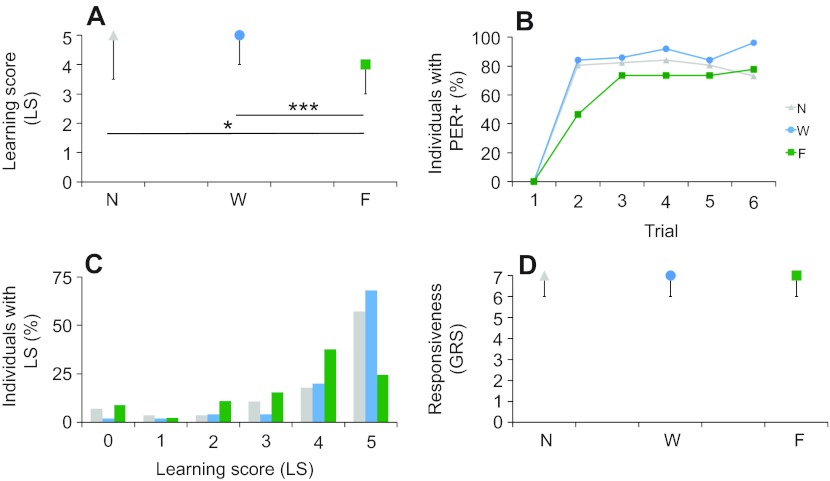Fig. 2.
Behavioral senescence became detectable when typical summer traits with brood rearing and foraging were induced in mid winter. (A,B) Two weeks after previous winter bees established a foraging pattern (F) in the flight room (Fig. 1E), their learning performance was contrasted with old winter bees (W) from colonies that remained outside, as well with young nest bees (N) that were born in the flight room. Old foragers (F) showed a reduced learning performance compared with the young control (N) and old winter bees (W, P<0.001; MWU). Learning curves are shown in B. (C) The responsiveness control was similar in all groups (P=0.30). In A and D, medians as well as upper and lower quartiles are shown for learning score and gustatory responsiveness. Significance levels of MWU post hoc tests for this and the remaining figures are depicted as follows: *P<0.05; **P<0.01; ***P<0.001.

